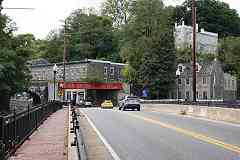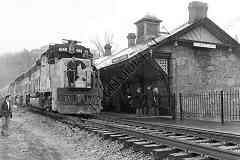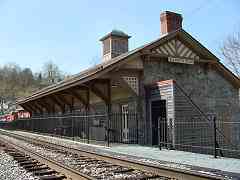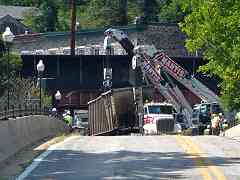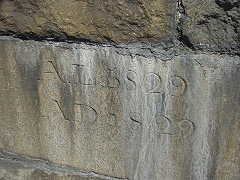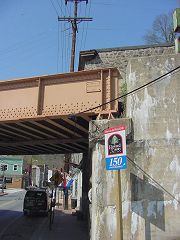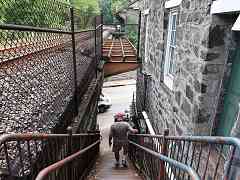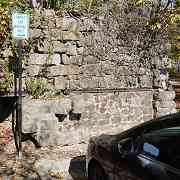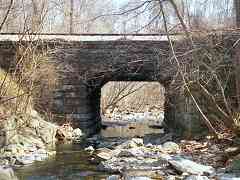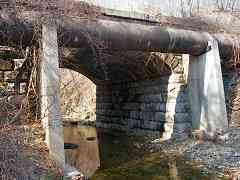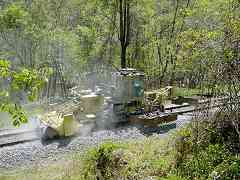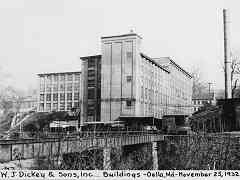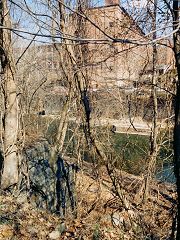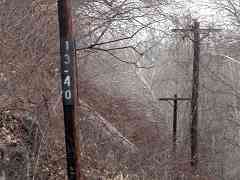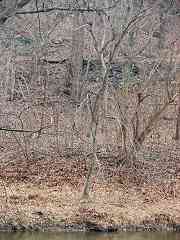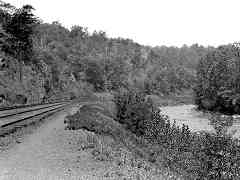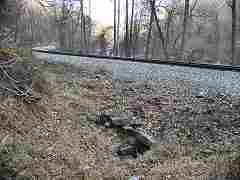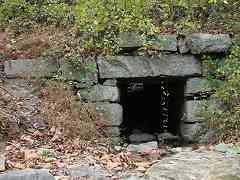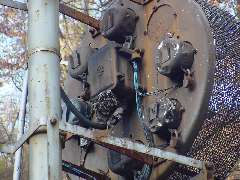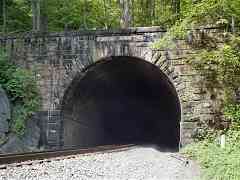|
This curious date stone can be found at the northeast corner base
of the Oliver Viaduct. It was laid on July 4, 1829.
Centered on the stone is A.D.1829, and chiseled above
(i.e. probably as an afterthought) is A.L.5829. "A.L." stands for
Anno Lucis, a calendar system employed by Freemasons. The origin is
the old belief that the world was created 4,000 years before the
birth of Christ. Many of the officials of the infant B&O were
Freemasons.
The Chronicles of Baltimore written by Col. J. Thomas Scharf and
published in 1874 described the opening of the railroad and
bridge at Ellicott City as follows:
On the 22d of May (1830), the president and directors of the Baltimore and Ohio
R. R. Co. invited the members of the Legislature and other officers of the
State, with the Mayor and City Council, the editorial corps, and some
distinguished strangers and others, to proceed with them on their road to
Ellicott's Mills. There were about 100 in all, in four carriages each
drawn by one horse. In one of them Mr. Charles Carroll of Carrollton
returned as far as Elk Ridge, where he took the stage and proceeded to
Washington, being the first person who used this road as on a journey for
business not connected with its immediate concerns. On the 24th of May the
cars commenced their regular journeys for business, charging for the round
trip 75 cents. On the 28th day of August, the main key-stone of the arches
of the fine granite structure passing over the Frederick turnpike road at
Ellicott's Mills, was adjusted in the presence of the directors of the
company and many citizens assembled to witness the ceremony. Robert Oliver
was called upon by the master-builder to assist in adjusting the stone;
after which, the president of the company, Philip E. Thomas, addressed the
spectators in a happy manner, during which he said:--"The directors of the
Baltimore & O. R. R. Co., having deemed it advisable to dignify the
several most important structures upon the road by the names of those
citizens under whose influence and patronage this great work has been
sustained, the first viaduct was honored with the name of the oldest and
most revered of our citizens, the last survivor of that illustrious band
who signed the instrument which declared us an independent nation. To the
second was assigned the name of a liberal, patriotic, and highly esteemed
fellow-citizen, William Patterson. The noble edifice of which we have just
witnessed the completion, I have been instructed to designate by the name
of a fellow-citizen no less distinguished for his liberality, public
spirit, and generous support of the magnificent enterprise in which we
have embarked. This structure will accordingly hereafter be distinguished
by the name of the Oliver Viaduct."
|
